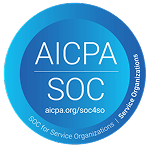What you need to know about CPT, OPT and working as an F-1 student
If you’re studying in the U.S. on anF-1 visa, you may be wondering when and how you can access international student job opportunities. While the F-1 visa is primarily for full-time study, there are options to gain real-world experience through legal employment. The two main types of work authorization are curricular practical training (CPT) and optional practical training (OPT).
This guide explains what each one allows, when you can use them and how to stay within the rules as an F-1 student.
On-campus work: Where most students start
Before exploring CPT or OPT, it’s worth understanding what is allowed on campus. F-1 students are permitted to work on campus part-time during the academic year and full time during official school breaks.
Typical on-campus jobs include:
- Library assistant
- Research or lab assistant
- Dining hall staff
- Campus bookstore clerk
You do not need additional authorization for on-campus work, but your total hours must remain under 20 per week during the semester. You must also report your job to your school’s designated school official (DSO).
What is CPT and when can you use it?
Curricular practical training (CPT) for international students is temporary work authorization that allows you to participate in paid or unpaid internships, co-op programs or practicum work that is part of your academic program.
Key facts about CPT:
- You must have completed at least one full academic year before becoming eligible.
- The job must be directly related to your major and required or credit-bearing.
- You must receive CPT approval from your DSO before you begin working.
- CPT is employer-specific and date-specific.
- You can use CPT part time (20 hours or fewer) or full time (more than 20 hours).
Be careful not to use full-time CPT for 12 months or more, or you will lose eligibility for OPT later. Most students use CPT during the summer or as part of required internship courses.
What is OPT and how is it different?
Optional practical training (OPT) jobs for international students refers to work authorization that allows you to work in your field of study before or after graduation.
There are two types:
- Pre-completion OPT: used while still enrolled in classes
- Post-completion OPT: used after finishing your degree
You’re eligible for up to 12 months of OPT per academic level. If you’re in a science, technology, engineering or math (STEM) program, you may qualify for an additional 24-month extension, known as STEM OPT.
Unlike CPT, OPT requires you to:
- Apply to U.S. Citizenship and Immigration Services (USCIS)
- Receive an Employment Authorization Document (EAD) before working
- Report all employment and changes to your DSO
OPT offers more flexibility than CPT. You do not need a job offer to apply, and you can change employers if your job remains in your field.
CPT vs OPT: What to consider
Here is a quick comparison:
|
Feature |
CPT |
OPT |
|
Requires course credit |
Yes |
No |
|
Requires job offer to apply |
Yes |
No |
|
Work start timeline |
During your degree |
During or after your degree |
|
Who approves it |
Your DSO |
USCIS and your DSO |
|
Employer flexibility |
Job-specific |
Not employer-specific |
|
Maximum duration |
No official limit, but 12+ months full time affects OPT |
12 months, or 36 with STEM extension |
Choosing between CPT and OPT depends on when you want to work and what your program allows. Talk to your DSO early to map out the best timeline.
Stay within the rules when working on an F-1 visa
Working without authorization can put your visa status at risk. Always:
- Check with your DSO before accepting any job.
- Follow limits on hours, job type and dates.
- Keep good records of your work authorization documents.
- Report all jobs and address changes to SEVIS through your school.
If your visa is terminated for unauthorized employment, it can affect your ability to remain in or return to the U.S.
Plan ahead with financial support that fits F-1 rules
Many international students use MPOWER Financing to support their education while staying fully compliant with F-1 visa guidelines. MPOWER loans are designed for students who may not have a U.S. cosigner or credit history.
You can use an MPOWER loan to:
- Pay for tuition and housing so you do not need to rely on unauthorized work
- Bridge the gap between scholarships and actual expenses
- Show financial stability when applying for CPT or OPT
MPOWER works with F-1 students at approved universities and offers support throughout your studies, including visa planning resources and career tools.
Use work opportunities to build your future
As an F-1 student, you can gain valuable work experience while staying within visa rules. Whether you pursue an on-campus job, CPT internship or post-completion OPT, the key is to understand your options and plan ahead.
With the right approvals and preparation, working during your studies can support your career goals without risking your immigration status.

